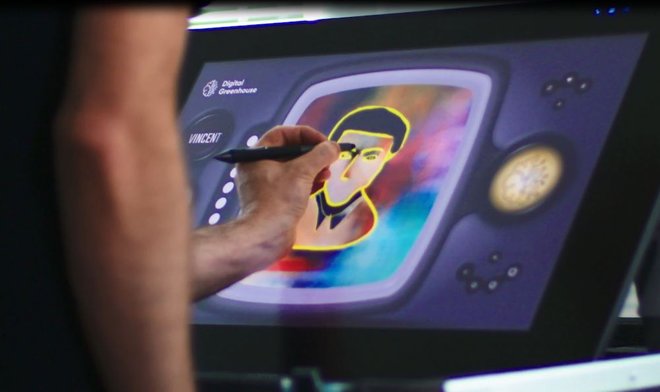A new artificial intelligence system can turn simple sketches into paintings reminiscent of works by great artists of the 19th and 20th centuries, researchers say.
copyright by www.livescience.com
 The artificial intelligence (AI) system, dubbed Vincent, learned to paint by “studying” 8,000 works of art from the Renaissance up to the 20th century. According to the system’s creators — engineers from the United Kingdom-based research and innovation company Cambridge Consultants — Vincent is unique not only in its ability to make art that is actually enjoyable but also in its capability to respond promptly to human input.
The artificial intelligence (AI) system, dubbed Vincent, learned to paint by “studying” 8,000 works of art from the Renaissance up to the 20th century. According to the system’s creators — engineers from the United Kingdom-based research and innovation company Cambridge Consultants — Vincent is unique not only in its ability to make art that is actually enjoyable but also in its capability to respond promptly to human input.
Painting by Vincent not the Numbers
“Vincent allows you to draw edges with a pen, edges of a picture you can imagine in your mind, and from those pictures, it produces a possible painting based on its training,” said Monty Barlow, director of machine learning at Cambridge Consultants, who led the project. “There is this concern that artificial intelligence will start replacing people doing things for them, but Vincent allows humans to take part in the decisions of the creativity of artificial intelligence.”
Some previous attempts to produce AI-generated art delivered rather scary results, such as the human portraits drawn by the Pix2Pix tool that was introduced earlier this year by Dutch Public Broadcaster NPO. Pix2Pix used sketches drawn by humans as a starting point and attempted to turn them into what is meant to resemble an oil painting of a female face. The creations, however, looked more like they were pulled from a horror movie.
Learning from the great masters of art
While Vincent’s art doesn’t look entirely realistic, it could pass for some of the more abstract creations of masters of the impressionist or expressionist era, such as Vincent van Gogh or Edvard Munch. “It has learned contrast and color and brushstrokes,” Barlow told Live Science here at the Re.Work Deep Learning Summit on Sept. 22, where Vincent was first presented. “It can bring all of that to play when you draw a picture, giving you access to all that artistic content.” Barlow said that using only 8,000 works of art to train Vincent is by itself a major achievement. Previously, a similar system would have needed millions, or even billions, of samples to learn to paint. […]
read more – copyright by www.livescience.com


A new artificial intelligence system can turn simple sketches into paintings reminiscent of works by great artists of the 19th and 20th centuries, researchers say.
copyright by www.livescience.com
Painting by Vincent not the Numbers
“Vincent allows you to draw edges with a pen, edges of a picture you can imagine in your mind, and from those pictures, it produces a possible painting based on its training,” said Monty Barlow, director of machine learning at Cambridge Consultants, who led the project. “There is this concern that artificial intelligence will start replacing people doing things for them, but Vincent allows humans to take part in the decisions of the creativity of artificial intelligence.”
Some previous attempts to produce AI-generated art delivered rather scary results, such as the human portraits drawn by the Pix2Pix tool that was introduced earlier this year by Dutch Public Broadcaster NPO. Pix2Pix used sketches drawn by humans as a starting point and attempted to turn them into what is meant to resemble an oil painting of a female face. The creations, however, looked more like they were pulled from a horror movie.
Learning from the great masters of art
While Vincent’s art doesn’t look entirely realistic, it could pass for some of the more abstract creations of masters of the impressionist or expressionist era, such as Vincent van Gogh or Edvard Munch. “It has learned contrast and color and brushstrokes,” Barlow told Live Science here at the Re.Work Deep Learning Summit on Sept. 22, where Vincent was first presented. “It can bring all of that to play when you draw a picture, giving you access to all that artistic content.” Barlow said that using only 8,000 works of art to train Vincent is by itself a major achievement. Previously, a similar system would have needed millions, or even billions, of samples to learn to paint. […]
read more – copyright by www.livescience.com
Share this: